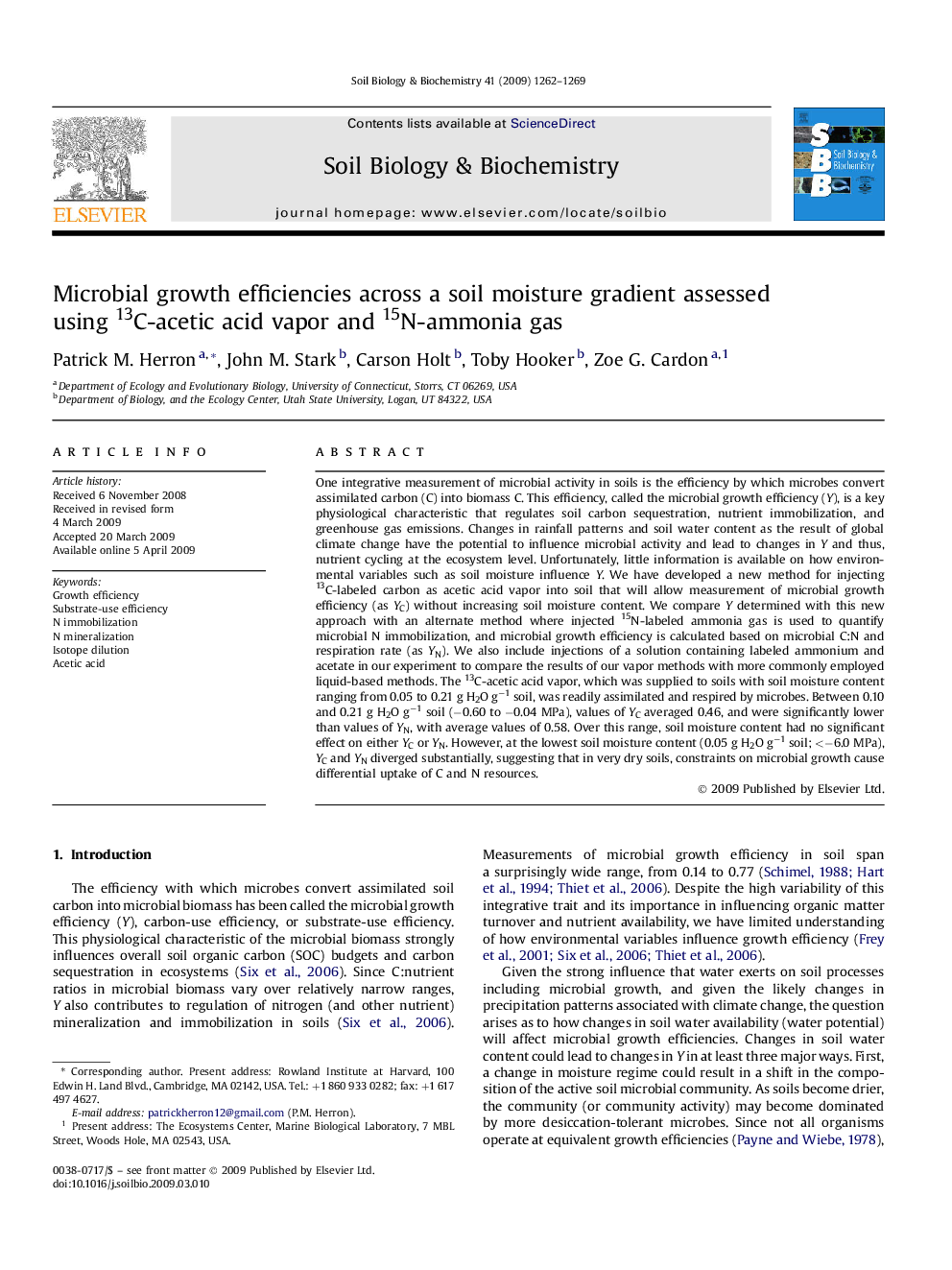| کد مقاله | کد نشریه | سال انتشار | مقاله انگلیسی | نسخه تمام متن |
|---|---|---|---|---|
| 2025629 | 1070004 | 2009 | 8 صفحه PDF | دانلود رایگان |

One integrative measurement of microbial activity in soils is the efficiency by which microbes convert assimilated carbon (C) into biomass C. This efficiency, called the microbial growth efficiency (Y), is a key physiological characteristic that regulates soil carbon sequestration, nutrient immobilization, and greenhouse gas emissions. Changes in rainfall patterns and soil water content as the result of global climate change have the potential to influence microbial activity and lead to changes in Y and thus, nutrient cycling at the ecosystem level. Unfortunately, little information is available on how environmental variables such as soil moisture influence Y. We have developed a new method for injecting 13C-labeled carbon as acetic acid vapor into soil that will allow measurement of microbial growth efficiency (as YC) without increasing soil moisture content. We compare Y determined with this new approach with an alternate method where injected 15N-labeled ammonia gas is used to quantify microbial N immobilization, and microbial growth efficiency is calculated based on microbial C:N and respiration rate (as YN). We also include injections of a solution containing labeled ammonium and acetate in our experiment to compare the results of our vapor methods with more commonly employed liquid-based methods. The 13C-acetic acid vapor, which was supplied to soils with soil moisture content ranging from 0.05 to 0.21 g H2O g−1 soil, was readily assimilated and respired by microbes. Between 0.10 and 0.21 g H2O g−1 soil (−0.60 to −0.04 MPa), values of YC averaged 0.46, and were significantly lower than values of YN, with average values of 0.58. Over this range, soil moisture content had no significant effect on either YC or YN. However, at the lowest soil moisture content (0.05 g H2O g−1 soil; <−6.0 MPa), YC and YN diverged substantially, suggesting that in very dry soils, constraints on microbial growth cause differential uptake of C and N resources.
Journal: Soil Biology and Biochemistry - Volume 41, Issue 6, June 2009, Pages 1262–1269